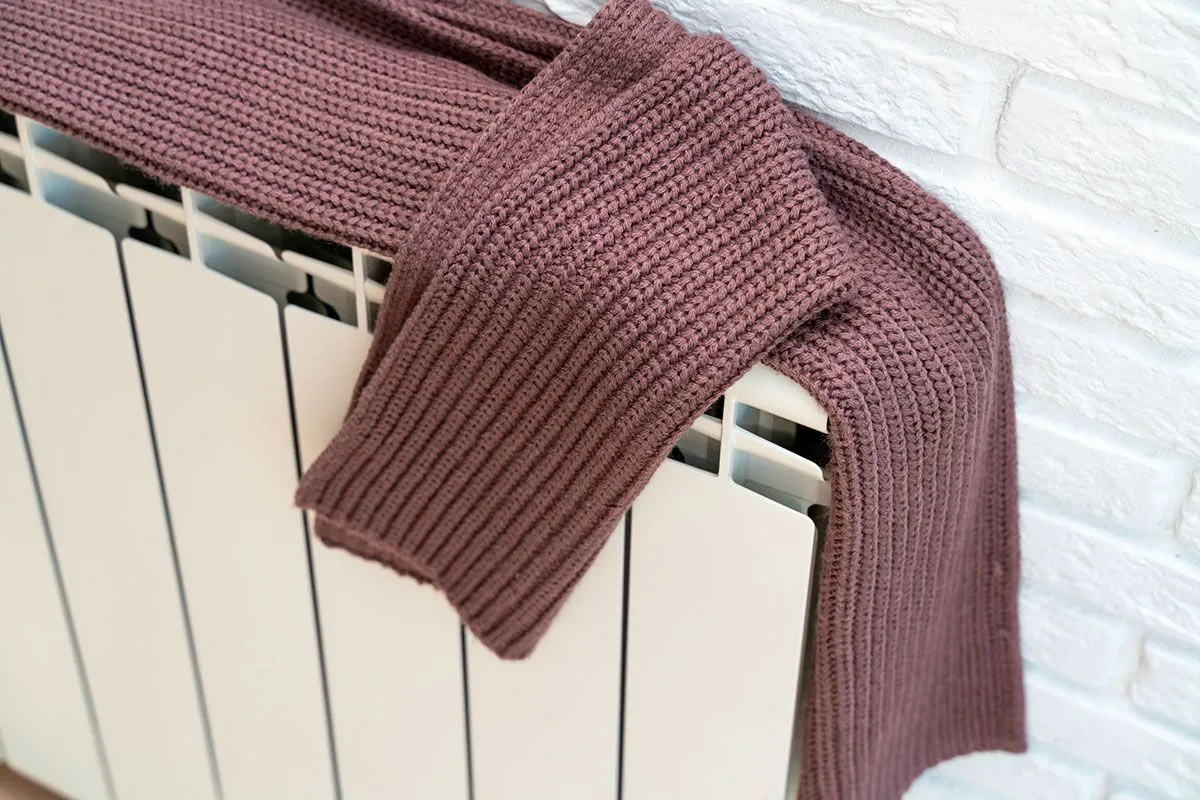Wasting energy and higher bills
Drying your clothes on the radiator might seem like a time-saver, but it actually wastes a lot of energy. When clothes cover the radiator, they block the heat from spreading evenly around the room. This forces your heater to work extra hard to keep the room warm, which pushes up your energy usage and, yep, your bills.
But it doesn’t stop at the cost. When your heating system struggles because of blocked radiators, it ends up using more energy overall, adding extra pressure on the environment by bumping up overall energy demand.
Hurting your radiator’s lifespan
Radiators are built to warm up your space, not to be used as makeshift drying racks. When wet clothes sit on them, the moisture can eventually lead to rust and corrosion on the metal. This damage can make your radiator work less effectively over time.
Electric radiators are at even higher risk when used in this way. The damp environment can trigger electrical glitches or even short circuits, which not only compromise your safety but can also end up costing you money if you need repairs or a replacement. In short, misusing your radiator to dry clothes can shorten its life and rack up extra expenses.
Fire risks
One big worry that often flies under the radar is the fire hazard from drying clothes on a radiator. Clothes draped over a hot surface can become a fire starter if they’re left unattended or too close to the heat. Even if it seems like a minor concern, the results can be nothing short of dramatic.
Experts have long warned about using radiators for drying because of these safety issues, yet many folks still underestimate the danger of placing fabric right on top of a heat source.
Indoor air issues
There’s also a downside that affects the air you breathe. When clothes trap heat against the radiator without allowing enough airflow, the moisture lingers in the fabric. This can lead to unpleasant odors filling up your space and encourage bacteria to form in the clothes—an outcome that isn’t just a bother to your nose but can also mess with your health over time.
Poor indoor air quality from these drying methods can make it harder for people, especially those with existing allergies or breathing problems, to stay healthy. This issue is even more common in winter when the windows are shut tighter than usual.
By looking at all these factors—from wasting energy and risking damage to your radiator, to the fire dangers and the drop in indoor air quality—it’s easy to see why experts keep warning against using radiators as drying racks. Sticking to more traditional drying methods not only helps protect your home and budget, but it also keeps your living space safer and more comfortable all winter long.
